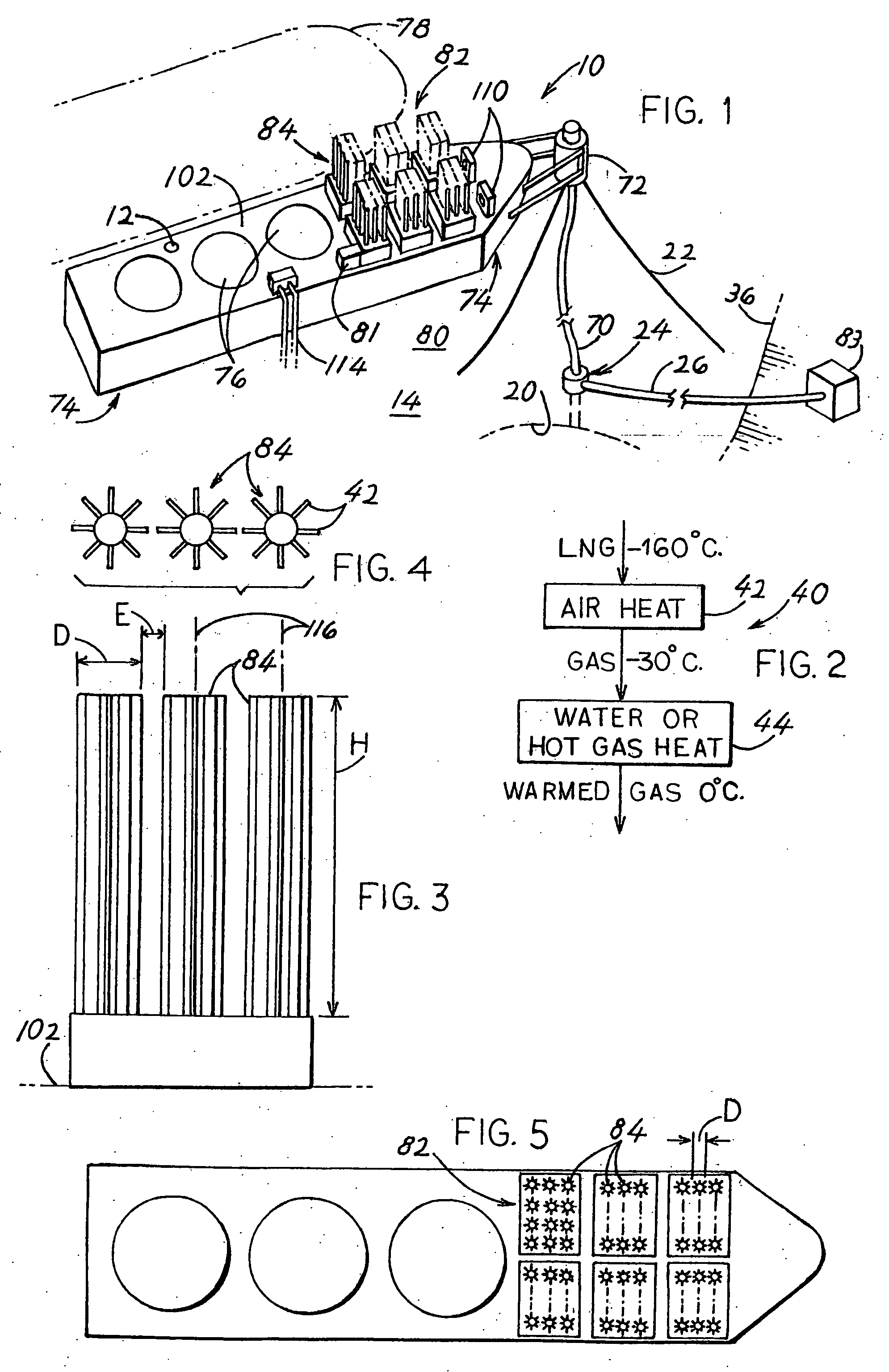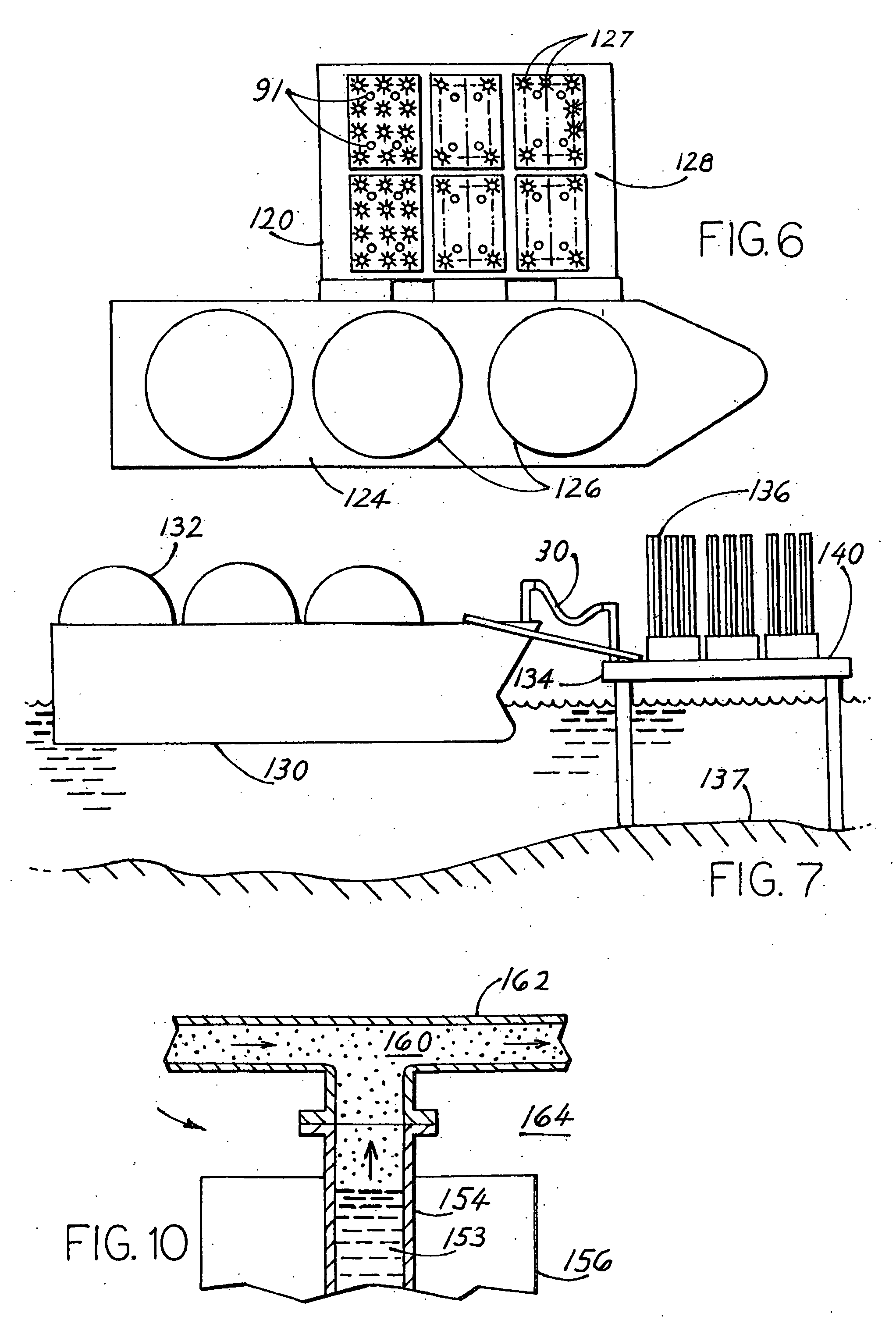Enhanced regas system
a regas system and regas technology, applied in water supply installations, gas/liquid distribution and storage, waterborne vessels, etc., can solve the problems of reducing the heat exchange capacity of the layer, affecting operation, and increasing the thickness of the layer, so as to reduce the cost, reduce the cost, and reduce the effect of fog
- Summary
- Abstract
- Description
- Claims
- Application Information
AI Technical Summary
Benefits of technology
Problems solved by technology
Method used
Image
Examples
Embodiment Construction
[0020]FIG. 1 illustrates an example of a floating import terminal 10 which includes a floating structure 74 (in the case of LNG the structure is also called FSRU, for Floating Storage and Regasification Unit) that has tanks 76 that store liquefied gas. Applicant uses the term “liquefied gas” to mean hydrocarbons that are gaseous at environmental temperatures (e.g. 15° C.) and pressures (e.g. one bar) and that have been cooled below −30° C. to liquefy the hydrocarbons. The floating structure 74 has an inlet 12 through which the liquefied gas is received from a liquefied gas tanker 78. The FSRU floating structure 74 typically stores a large quantity of thousands of tons of liquefied gas, with LNG (liquefied natural gas) maintained at a temperature such as −160° C. to keep it liquid at atmospheric pressure. The FSRU floating structure 74 is moored to the sea floor 14 at an offshore location 80, with a harbor shown.
[0021]The cold liquid hydrocarbon gas in the tanks 76 of the floating st...
PUM
 Login to View More
Login to View More Abstract
Description
Claims
Application Information
 Login to View More
Login to View More - R&D
- Intellectual Property
- Life Sciences
- Materials
- Tech Scout
- Unparalleled Data Quality
- Higher Quality Content
- 60% Fewer Hallucinations
Browse by: Latest US Patents, China's latest patents, Technical Efficacy Thesaurus, Application Domain, Technology Topic, Popular Technical Reports.
© 2025 PatSnap. All rights reserved.Legal|Privacy policy|Modern Slavery Act Transparency Statement|Sitemap|About US| Contact US: help@patsnap.com



